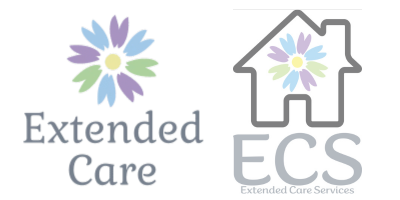Disabilities come in various forms, affecting individuals in multiple aspects of their lives. While physical limitations are often the center of attention, the social barriers for persons with disabilities can be just as challenging. Living with a disability can significantly impact one’s social life, making it difficult to forge meaningful connections with others and participate in community activities. In this article, we will dive into the social barriers individuals face with disabilities and explore practical solutions for overcoming these challenges.
One significant obstacle faced by disabled persons is societal attitudes towards disabilities. Misconceptions and stereotypes can shape people’s perceptions of what it means to have a disability, which can result in exclusion, discrimination, or even bullying. For instance, some people may assume that an individual with cognitive impairment might not be able to fully engage in social activities when this is not necessarily the case.
A lack of accessibility is another major barrier for persons with disabilities. Public spaces, buildings, transportation systems, and communication tools not designed with inclusivity hinder disabled individuals from participating in their community to the fullest extent. For example, a person using a wheelchair may be unable to join a local meeting or event if the venue is inaccessible.
Moreover, communication barriers can contribute to social exclusion for individuals with disabilities. It is crucial to understand that not everyone communicates or processes information similarly. A person with a hearing impairment, for example, may rely on sign language or visual aids to communicate, while someone with a cognitive disability might need more time to listen, process, and respond during conversations.
For those living with disabilities, the support of programs like Extended Care is essential in breaking down these barriers. Extended Care is an approved home help service agency in Ventura County, California, providing comprehensive support for individuals receiving home and community-based waiver services. By offering residential care, pre-vocational services, supported community connections, and non-medical transportation services, Extended Care works diligently to help disabled individuals overcome the social barriers that challenge their daily lives.
In the following sections, we will provide valuable insights and practical tips for overcoming social barriers for persons with disabilities, empowering them to lead fulfilling and connected lives within their community.
Promoting Equal Opportunities and Inclusivity
Creating inclusive environments and promoting equal opportunities for persons with disabilities begins with addressing societal attitudes. It is essential to challenge stereotypes, raise awareness about various disabilities, and educate people about their impact on individuals. We must strive to foster empathy, understanding, and acceptance, ensuring everyone is treated with respect and dignity.
Initiatives like community outreach programs, public speaking engagements, and social media campaigns can spread awareness, dismantle misconceptions, and ultimately build a more inclusive society. Schools and community groups can host workshops on disability education, teaching children and adults about inclusivity and understanding.
Prioritizing Accessibility in Public Spaces
Making public spaces more accessible is a necessary step toward achieving full inclusivity. To make this happen, businesses, government agencies, and community organizations must collaborate and develop policies and practices prioritizing accessibility.
Cities and municipalities can engage with architects and urban planners to create accessible infrastructures that cater to the diverse needs of persons with disabilities. This could include installing wheelchair ramps, accessible restrooms, and elevators and implementing accessible transportation systems and signage.
Moreover, accessibility goes beyond physical adaptations. Digital accessibility is becoming increasingly important as more people rely on the internet and technology to communicate, learn, and work. Consider creating websites and digital tools that adhere to web accessibility standards, ensuring everyone can easily access information, services, and programs.
Enhancing Communication Strategies
Effective communication is crucial for social interaction and integration. For individuals with disabilities, overcoming communication barriers requires a multi-faceted approach, which includes:
- Considering the different ways people communicate and process information, such as using alternative communication methods (AAC) or assistive technology.
- Implementing clear and concise language in written and verbal communication.
- Promoting visual aids, such as pictograms or easy-read documents, to enhance understanding.
Community organizations and businesses should also provide accessibility training to staff members, ensuring they have the necessary knowledge and skills to communicate effectively with persons with disabilities.
Empowering Individuals with Disabilities to Foster Social Connections
For persons with disabilities, forming and maintaining meaningful social connections is integral to leading a fulfilling life. Below are some ways in which individuals and their support networks can foster these connections:
- Join local support groups or clubs where people can share their experiences, learn from one another, and form lasting friendships.
- Encourage participation in community events, such as art classes, sports teams, or volunteer opportunities, that cater to individuals with diverse abilities.
- Explore personal hobbies and interests to help identify potential social opportunities.
- Seek professional assistance from support workers, therapists, or peer mentors to develop social skills and strategies for managing challenges in social situations.
Finally, don’t shy away from initiating conversations and interactions with others. Fostering connections takes time and effort, but the positive outcomes can be incredibly rewarding.
Conclusion
Overcoming social barriers for persons with disabilities is a multi-faceted challenge that requires the collective effort of individuals, communities, and organizations. By promoting equal opportunities, prioritizing accessibility, enhancing communication strategies, and empowering individuals to foster social connections, we can create a more inclusive society where everyone can thrive and fully participate.
Extended Care recognizes the importance of addressing these barriers and is deeply committed to providing the necessary disability services and support to help individuals with disabilities fully engage and prosper within their community. Let’s work together to make Ventura County a shining example of inclusivity and equal opportunity for all.

